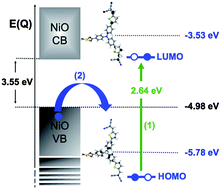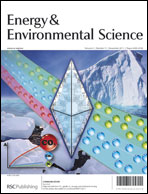We have carried out theoretical investigation aiming at modelling the assessment of mechanisms of photoinduced processes in a recent p-type organic metal-free dye derived from the triphenylamine (P-1) structure. In the P-1 system, one uses the triphenylamine moiety as the electron donor, malononitrile as the electron acceptor, and a thiophene that plays the role of the conjugated chain. Basically, the difference between the P-1 dye and the common organic dyes used in the n-type DSSC field is the anchoring group located on the electron donor group. In a first step, DFT and TDDFT approaches have been exploited to calculate the key parameters controlling both the intramolecular charge transfer (ICT) and hole transfer rate constants in the Gurney-Gerischer-Marcus (GGM) formalism, for either a solvent-controlled adiabatic or a nonadiabatic electron transfer. These are: (i) the electronic coupling; (ii) the reorganization energies; and (iii) the variation of the Gibbs energy. The gathered results are in agreement with the experimental trends. (i) The vertical ICT excited states energy has been calculated at 2.67 eV, in perfect line with the experiment (2.65 eV). (ii) Two mechanisms can be conceived for the hole transfer and regeneration process. The first deals with the reduction of dye molecule at the excited state followed by an electron transfer from the reduced dye to the oxidized regenerator. The second implies a redox reaction between the excited dye and the oxidized regenerator, followed by an electron transfer from the cathode to the oxidized dye. (iii) Our theoretical investigation suggests that the first mechanism is dominant. Secondly, we propose structural modifications improving the TPA-based DSSCs hole transfer efficiency and we show that an additional –CN graft on the malononitrile unit combined to the functionalisation of the TPA moieties by –OMe groups (to give P-1b) should significantly improve the key parameters related to the electron injection. Indeed, for P-1b, we have noticed an increase of both the RLHE factor (0.907) and the injection driving force (−0.33 eV). This dye is therefore expected to be a very promising molecule in the p-type DSSC field.

You have access to this article
 Please wait while we load your content...
Something went wrong. Try again?
Please wait while we load your content...
Something went wrong. Try again?


 Please wait while we load your content...
Please wait while we load your content...